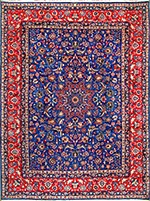Textiles Studies
Date of this Version
2017
Document Type
Article
Citation
In Overturning Certainties in Near Eastern Archaeology: A Festschrift in Honor of K Aslthan Yener. Edited by Cigdem Maner, Mara T. Horowitz, Allan S. Gilbert. BRILL LEIDEN / BOSTON. 2017
DOI 10.1163/9879004353572_007
Abstract
The marble minbar of the Selimiye mosque in Edirne that was designed by the Ottoman architect, Sinan, and completed in 1575, bears a circular medallion of carved and pierced openwork in each of its triangular framing walls. The carved circular patterns are unusual in having radial symmetry with local five-fold and ten-fold rotations, but no periodic repeat. This contribution explores the relationship of this late 16th-century design to a similar array generated by X-ray diffraction of aluminum alloys, identified as a quasiperiodic pattern, which garnered the 2011 Nobel Prize in Chemistry. The 16th-century appearance of this pattern in an architectural context is attributed to the deliberate and conscientious attention to elements of geometry in the training of Ottoman architects, which drew upon a long tradition of geometric patterns in Islamic art. Given the intersections of Ashhan Yener's and my life and interests in Turkey over four decades, the coincidence of this quasiperiodic pattern with long-range global order, not known or understood in either alloys or architecture before the 21st-century, seems an appropriate tribute to a long friendship and shared appreciation of overturning certainties.
Included in
Art and Materials Conservation Commons, Art Practice Commons, Fiber, Textile, and Weaving Arts Commons, Indigenous Studies Commons, Museum Studies Commons


Comments
© KONINKLIJKE BRILL NV, LEIDEN, 2017